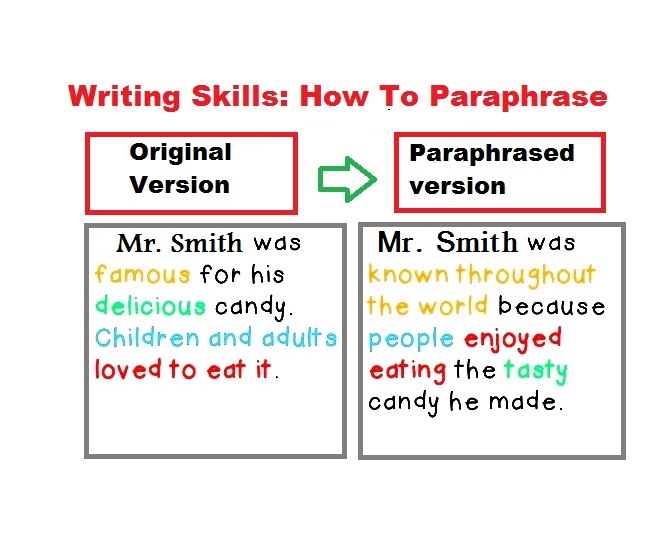How To Paraphrase In Easy Steps – A Comprehensive Guide
Watch the Following Video
Now let us do some practice
Take a pen and a paper and try to paraphrase this short text:
Research reports have shown that there is little agreement on the effect of computer games on children, though it is undoubtedly a huge concern for many people, especially for Moroccan parents. When the Moroccan government banned the use of computer games by children under the age of fourteen years in 2014, 88% of the population supported the decision (Jamal, 20015). However, a group of people didn’t accept it and seem to believe that games have several positive effects.
Now, compare your version with this version:
Although a lot of parents are concerned with the use of PC games by their kids, researchers don’t seem to completely agree on their associated impact. According to (Jamal 2015), at the point when Moroccan governmental officials restricted utilizing PC games by youngsters who are less than 14 years old, the vast majority of people showed advocacy to this resolution. Nevertheless, a number of individuals showed objection as they assume that games are beneficial in many respects.
This is a rubric you can use to check how well-paraphrase your text is.
| A rubric for assessing your paraphrase | |
| MEANING is the same. | |
| Most of the words have been changed. (Use synonyms and antonyms/opposites) | |
| The sentences have been significantly restructured. (e.g. phrases & clauses) | |
| This is about the same LENGTH as the original writing | |
| The information is correctly referenced. (if there is an author or a reference, mention it) | |
| Your own words and style are being used | |
| No new ideas (including your opinion) are being added to the paraphrased text | |
Guidelines for Effective Paraphrasing – How to Paraphrase.
As you can see, paraphrasing a text is more difficult than single sentences. You have to pay attention to the words, sentences, and keep track of the meaning. Don’t lose the meaning when swape ideas and sentences.
If you take a look at the original text and the paraphrased one, I have taken the first complex sentence that starts with “research and ends with parents and swapped the clauses (changing sentence patterns). I didn’t do it with the second part of the text because some ideas need to be put in advance so as not to confuse the reader. I changed several keywords and I punctuated the text differently.
Note also that paraphrasing is a skill that reflects students’ command of English. It is not enough to just replace some words with synonyms. There are several techniques as I mentioned in the video. Make sure you incorporate several ones.
Paraphrasing is one of the most difficult and most violated writing techniques because it simply requires full mastery of the target language (English). Changing a couple of words or eliminating a number of sentences does really count as paraphrasing. These are some guidelines to bear in mind.
Unlike summarizing, when you paraphrase, you can place the information in a new order. You can change the order of ideas of the original text.
Change as many words as you can (use synonyms). Basically, this is very challenging for some students as they lack vocabulary and jargon.
When you trying to paraphrase a paragraph, try to read it, and highlight the sentences and structures. Identify their types and how they link to each other.
Break the complex sentences into simple ones. You already understand the difference between different types of sentences, so you can use your knowledge to rewrite the sentences.
As a student expected to write a research project in the future, you have to be able to synthesize, summarize, and paraphrase. In all these situations, you will have to mention the sources.
When you quote something, you use the author’s words exactly, and use the quotation marks.
When you paraphrase a text, use your own words. This, however, does not mean you are the source of the ideas. If there is a writer, you have to cite it or refer to it.
The same thing goes with summarizing. You significantly condense the ideas in the original version and cite the author, if any.
- Attend to mechanics
- Check punctuation and capitalization
- Check the use of linking words
- (Use Grammarly: an online software) to check spelling and grammar mistakes.







